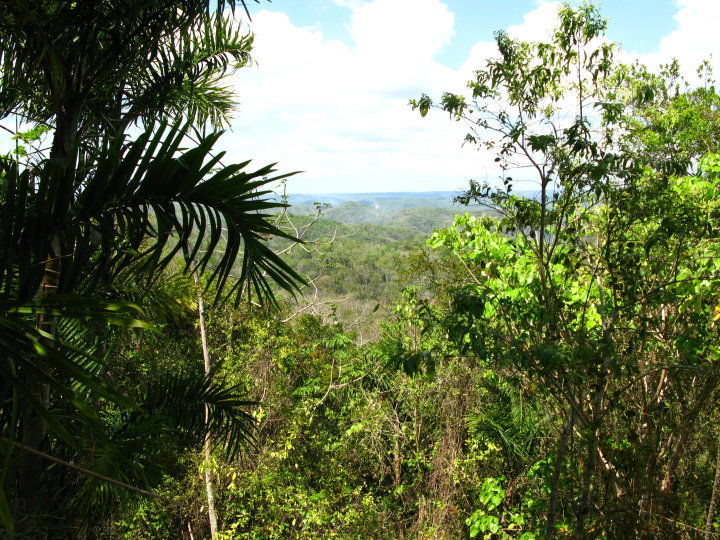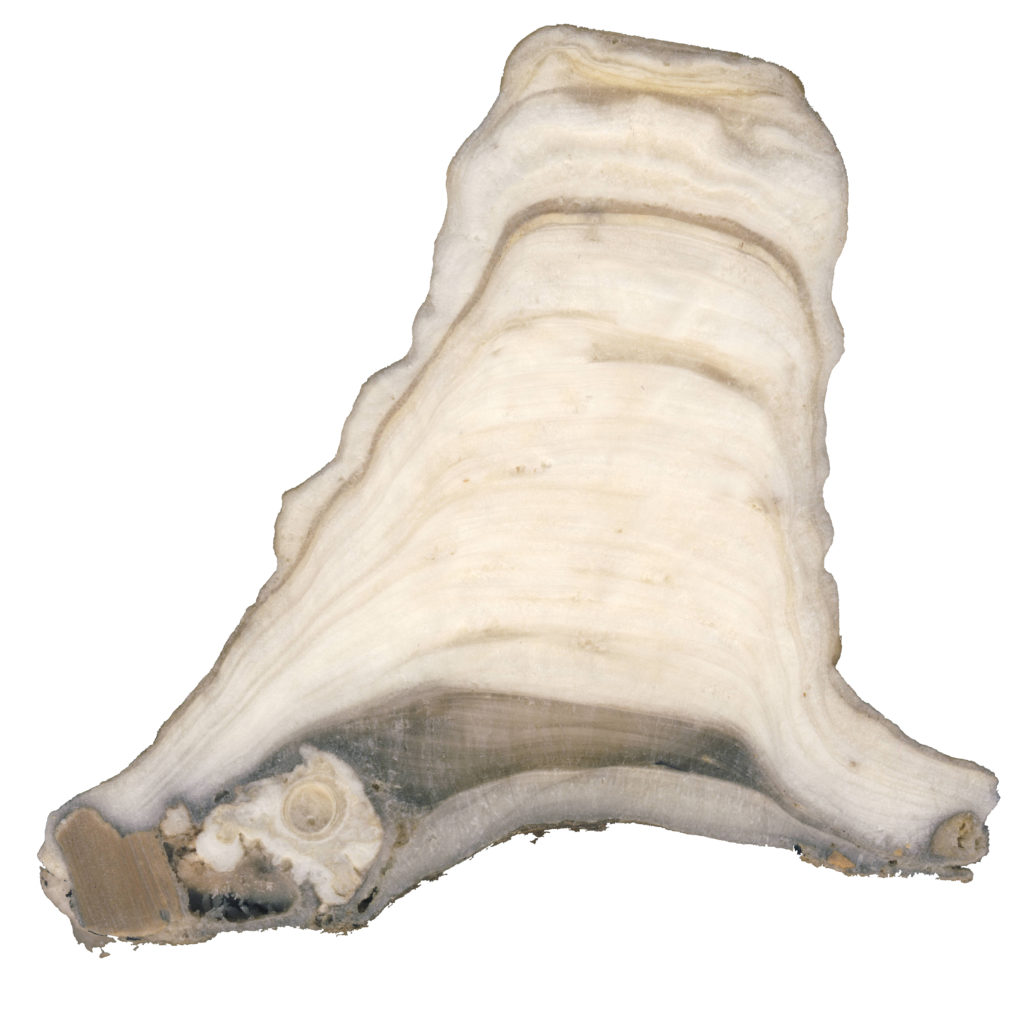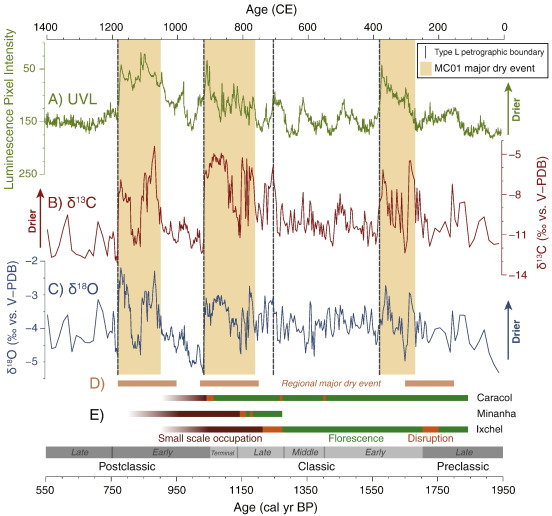The land that is now the modern country of Belize once supported a large Maya population during the first millennium CE. A great deal of interest has focused on the interactions between Maya society and their environment during the end of the Maya Classic Period (the “Maya collapse”) between 750 and 1000 CE, but available paleoclimate data rarely is located near former Maya cities and major populated regions. Additionally, discussions of the Maya “collapse” too often ignore the great spatial and temporal diversity of the Classic Maya people and their political disintegration in the Terminal Classic Period. To address these problems, I was part of a research team that traveled to Belize on two occasions for stalagmite sampling. Our research was focused on the Vaca Plateau in the west of the country, a region of karst uplands that was once heavily populated. Our goal was to develop local paleoenvironmental records that we could compare with nearby archaeological studies to better link how the Maya responded to changes in climate and their natural environmental. In total, we visited and sampled eight caves for potential paleoenvironmental analysis, and I visited six Maya sites (Tikal, Caracol, Xunantunich, Cahal Pech, Minanha, and Lower Dover) to gain a better appreciation of how Maya settlements were situated and arranged on the landscape.



Unfortunately, while stalagmites are typically dated by the uranium-thorium (U-Th) disequilibrium approach, natural uranium concentrations in Vaca Plateau stalagmites are generally very low (<100 ppb) and stalagmites are difficult or impossible to date by standard methods. In my MS thesis research and a subsequent paper, we worked around the limits of U-Th dating by radiocarbon dating organic material that was trapped within a stalagmite and combined it with other chronological evidence from the radiocarbon ages of calcium carbonate, lead-210 dating, and carbon and oxygen isotopic profiles. This approach allows paleoenvironmental analyses of stalagmites that would otherwise be considered not worth studying.

As part of this project, I also led the re-analysis of stalagmite MC01 which was collected by Jim Webster in 1990 from Macal Chasm on the Vaca Plateau. Since the initial analysis on MC01, sampling and analytical techniques have advanced considerably to allow much higher-resolution sampling of stable oxygen and carbon isotopes. In a published analysis, I combined a new set of 660 isotope values with petrographic study of thin sections and ultraviolet-stimulated luminescence to identify multiple periods of much drier conditions that spanned multiple decades over the past 3100 years. We called these periods ‘Major Dry Events’ (MDEs), and the timing of three of these MDEs coincides with periods of regional Maya sociopolitical change: the Late Preclassic-Early Classic Transition, the Terminal Classic Period, and the Early Postclassic Period. These MDEs can also be found in other regional paleoclimate records, suggesting that the MDEs were expressed across the greater Maya region and were not just local to the Vaca Plateau. In examining how these MDEs affected the local Maya populations, we worked with anthropologists to see how the the level of inherent environmental vulnerability and resilience strategies of different local polities could explain why some population centers were abandoned while others thrived. This focus on the role of human choice and agency in the face of environmental stress has important parallels and lessons for our society today.
